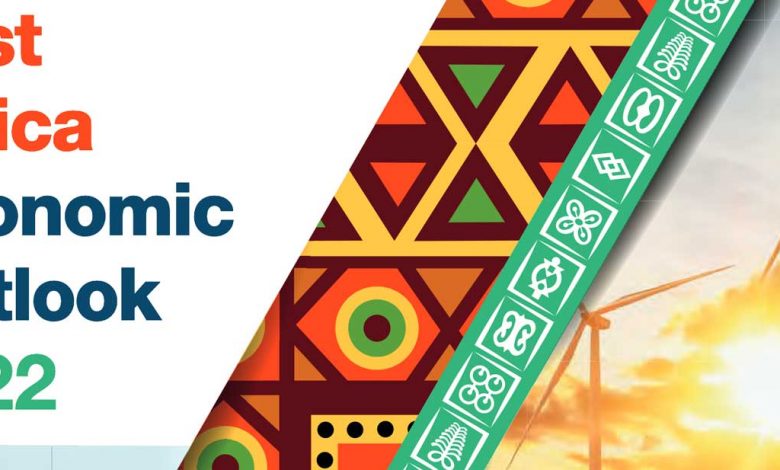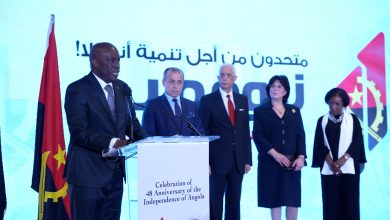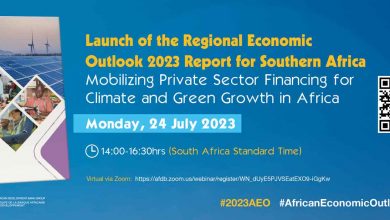African Development Bank predicts economic slowdown in East Africa in 2022, but recovery in 2023 | African Development Bank

Diplomat.Today
The African Development Bank
2022-11-16 00:00:00
——————————————-
The African Development Bank has published its latest East African Economic Outlook, forecasting a slow recovery in the region in 2022 at 4.0% from 5.1% in 2021.
The delay is due to the ongoing effects of COVID-19; the negative consequences of geopolitical tensions (particularly the conflict between Russia and Ukraine); climate change and devastating locust invasion, along with regional conflicts and tensions.
The report notes that because of these obstacles, countries in the region have experienced heightened inflationary pressures, particularly in food and fuel, leading to a rising cost of living. This has led to weakening of the national currency, floods and droughts, contraction of agricultural production; reduced business activity and falling revenue collection, among others.
However, the continued reopening of economies globally could mitigate these adverse effects in 2023 with an expected growth rate of 4.7%, repositioning East Africa as the top growth performer among the continent’s regions, the report said.
The report, themed “Supporting climate resilience and a just energy transition”was launched on October 28, 2022.
In developing the East Africa Economic Outlook 2022, the African Development Bank has critically studied several factors influencing growth in the 13 countries that make up the East African region. The region’s vulnerability to climate change impacts, such as droughts and floods, could further hamper the region’s fragile recovery.
At the launch, Tanzanian Finance Minister Dr Mwigulu Lameck Nchemba said the report was timely given the current cost of living which is a concern for every citizen in the region. Disruption to regional supply chains, sovereign debt and public debate about the need for pro-poor spending policies dominated the debate, Mwigulu said. He noted, “despite increasing infrastructure investment, more needs to be done to accelerate the development of sustainable infrastructure, including renewable energy to support industrialization and catalyze inclusive growth.” He called for additional resources to be mobilized to expand access to energy, noting that the Democratic Republic of Congo had vast renewable energy resources to illuminate the entire continent.
The Bank’s director-general for East Africa, Nnenna Nwabufo, said the East African region’s vulnerability to climate change impacts, such as drought and flooding, could further hamper the region’s fragile recovery. “This requires urgent policy action to build macroeconomic resilience, including by diversifying economies to absorb shocks.”
Emmanuel Pinto-Moreira, Director of the Bank’s Country Economics Department, highlighted the main development challenges facing the continent, particularly high inflation, rising inflation and climate change. He underlined the need to deepen domestic resource mobilization to fund social safety nets for the most vulnerable and climate-resilient infrastructure.
While the economic recovery is fragile, the economic recovery in East Africa is expected to continue over the medium term thanks to the recovery in services and industrial activities, increased government spending, reopening of travel and trade following the introduction of COVID-19 vaccines , recovery in the tourism sector, closer regional ties among the East African Community and supportive macroeconomic policies, noted Marcellin Ndong Ntah, chief economist at the bank.
Ndong-Ntah said higher debt burdens, depreciating macroeconomic domestic currency imbalances, a protracted conflict between Russia and Ukraine, rising income inequality, political instability and vulnerability to climate change and natural disasters are key domestic and external downside risks impacting the economy. medium term of the region. economic outlook.
Dr. Rose Ngugi, Executive Director of the Kenya Institute for Public Policy Research and Analysis (KIPPRA), encouraged the countries in the region to intensify their efforts to increase their annual growth rate by at least 7%, the minimum rate required to reach the to ensure achievement of Sustainable Development Goals (SDGs). To that end, countries must achieve internal and external macroeconomic stability, she said.
Reflecting on the theme of the report – climate resilience – Edward Sennoga, chief economist at the Bank, noted that East Africa has the second lowest resilience to climate change in Africa, with most countries in the region also characterized by high vulnerability and low willingness to respond to climate change. He said there was an urgent need for innovative financing approaches to bridge the huge gap in climate change financing.
According to the report, the climate finance gap for East Africa is estimated to average about $60 billion per year for the period 2020-2030. The report lists public-private partnerships, green bonds, partial risk and partial credit guarantees, carbon offsets and regional energy trading as some of the measures that could provide alternative financing for climate change. Teddy Mugabo, CEO of Rwanda Green Fund, reiterated this perspective by emphasizing the need for innovative financing instruments and the effective use of the carbon market.
For more information, read the East African Economic Outlook report for 2022 click here
——————————————-



